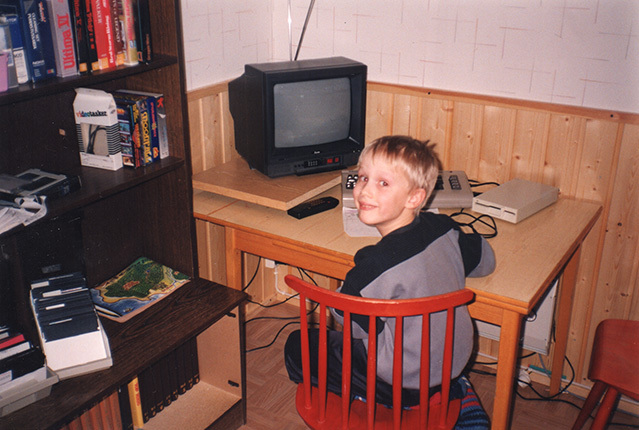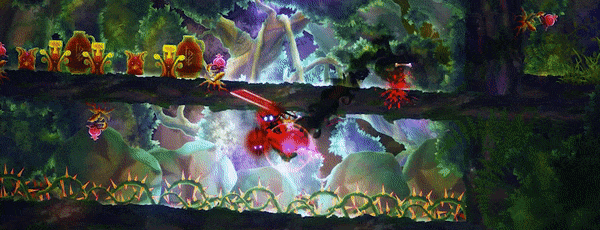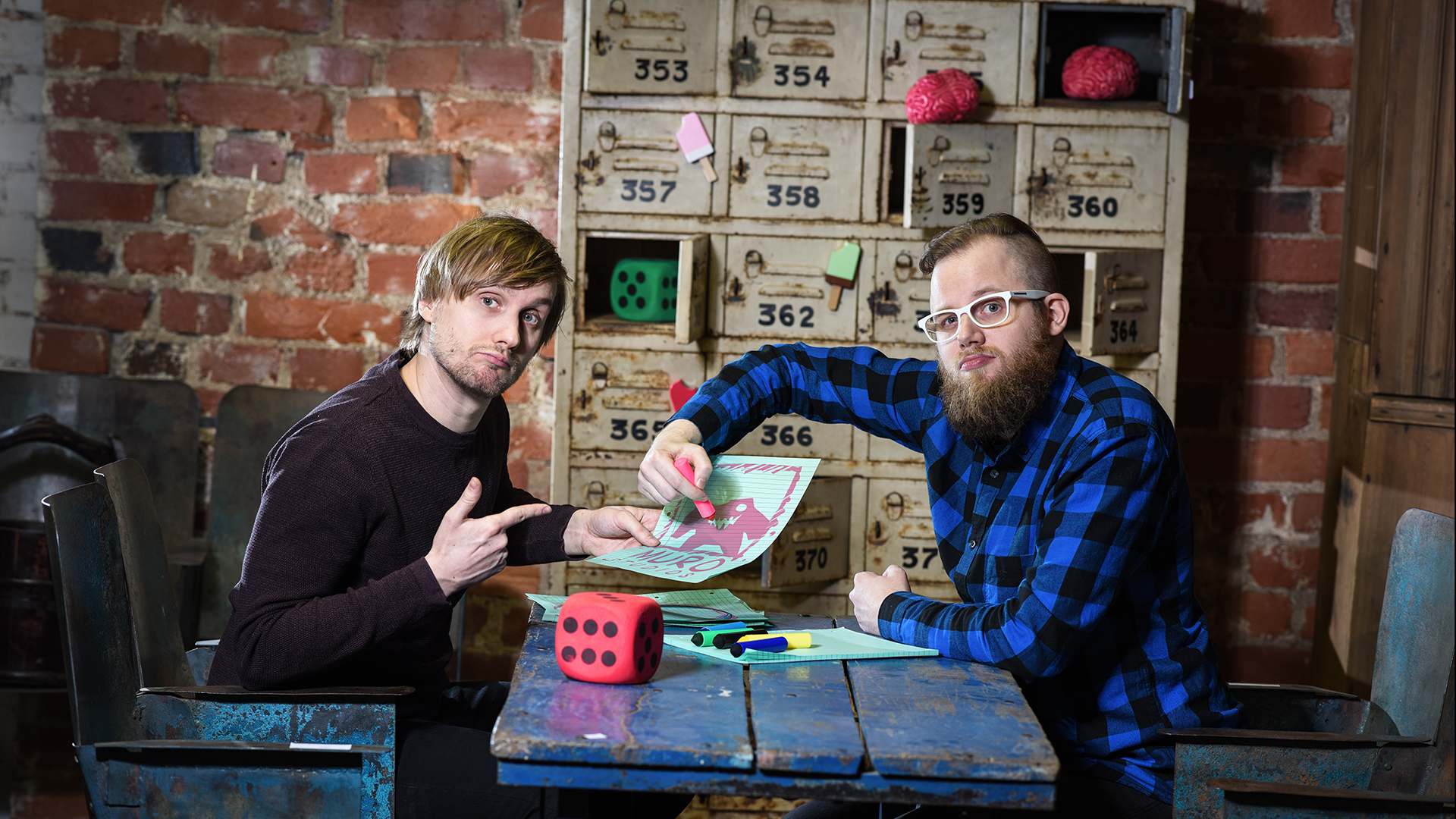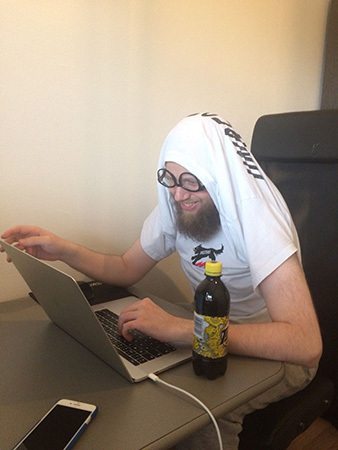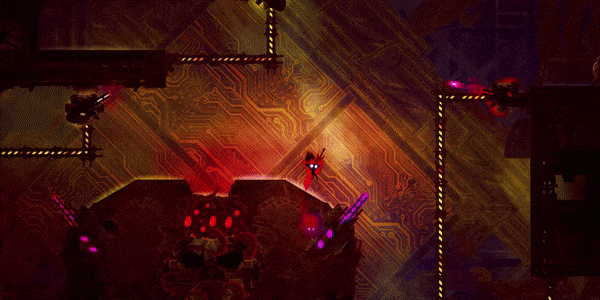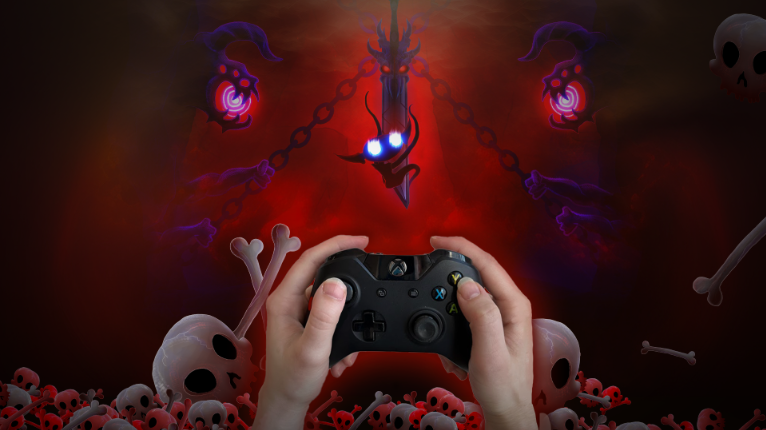Blog Post #3: The Origins Story
The World of DOOMBLADE
[h3]Introduction
[/h3]For this blog, we want to go into a little bit of how DOOMBLADE came to be. This includes the beginnings of the ideas that became the game as well as the people that helped us along the way.
DOOMBLADE got its start from a concept image created by Juha, the game’s artist. The style of the image is quite different from the aesthetic direction we ended up taking, but the idea of the highlight of the image - a powerful sword - had caught our imagination. The sword became the seed for the world of DOOMBLADE.
[h3]Origins of the Blade
[/h3]The very first thing we had lorewise was the blade. The name DOOMBLADE came up very early as well, as there was something intriguing in focusing on a sword that would not represent light or hope unlike many other fantastical swords. Instead, our blade became a manifestation of something darker.
We wanted to make DOOMBLADE into a sentient character as well with its own history and agendas. Our goal was to make the blade as unique as possible in our game’s world, so we decided it had to come from a dimension other than the one in which the story was mainly happening.
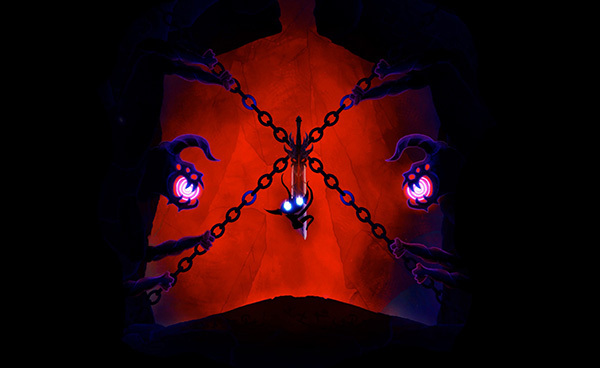
The blade would be the most powerful artifact in the world, but that posed a problem: we wanted to make a metroidvania, and thus there had to be power-ups that gradually give the player more power. So somehow the player should start the game with the most powerful sword in the world, but they would still have to be able to power themselves up more as the game progressed. The solution was to have the game start with DOOMBLADE being imprisoned and stripped of powers. This would lead into organic integration of the story and the dynamics of a metroidvania, as the player’s quest would involve restoring the blade to its former glory.
[h3]Origins of the Lore
[/h3]The core of our story was solid, but the rest of our lore package was a mess. We had some enemies and environments built in an early prototype of the game, but storywise none of this was connected in any sort of meaningful way. At this point we realized we needed professional help. Enter Andrew Adams.

A friend of ours introduced us to Andrew Adams, a writer from the United States with a style that we really fell in love with. He has a perfect way of being able to create immersive worlds with fantasy and sci-fi elements along with the sort of dark humor that we were after. Fortunately, he was very interested in working on DOOMBLADE.
What we gave him was the concept of the blade itself with its otherworldly nature as well as a concept of our freshly created protagonist, Gloom Girl (though I think Andrew came up with the name). He also got the incoherent mess of monsters and environments that would have to be packaged neatly into a story. And that is exactly what he did!

Andrew started building the dynamics of DOOMBLADE and Gloom Girl along with their joint motivations. At the same time, the monsters and non-player characters Juha had created started to come alive with rich backstories. All of a sudden we had the main races of the game: the Gloomlings, the Darksprouts, the Wilderkeeps, and the Grublins as well as lore behind the different biomes they dwell in. In the end, a rich lore bible for the game was born, from which we can absorb inspiration and content much more than we’ll ever have time to implement.
I haven’t even gotten to the game’s antagonists, but I have to stop myself here to not spoil more than I already have. The rest of DOOMBLADE’s story can be discovered soon by playing the game itself.
Please wishlist DOOMBLADE on Steam and give this blog a thumps up if you liked it, and if you have any questions you would like to see answered in later blogs leave us a comment below.
https://store.steampowered.com/app/922050/DOOMBLADE/
[h3]Stay tuned for next week, where we will dive further into why we as the developers decided to make a Metroidvania!
[/h3]

DOOMBLADE Iceberg Interactive

